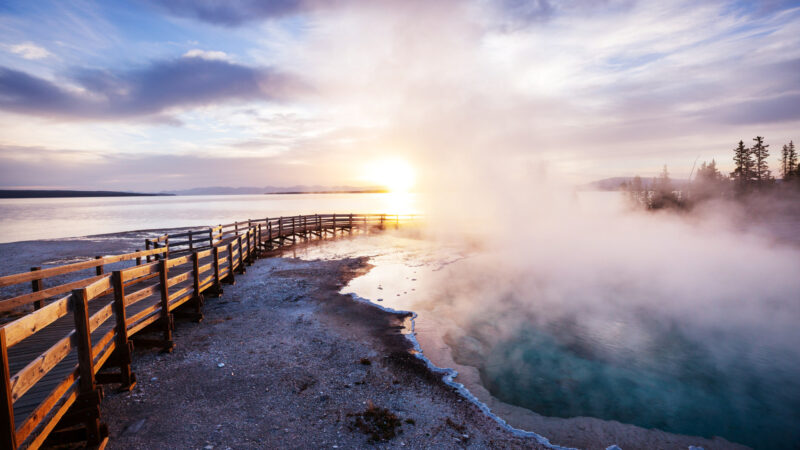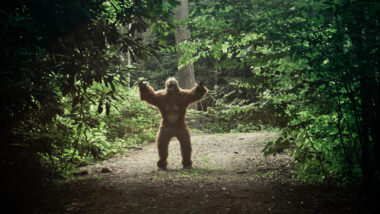Table of Contents Show
Would you stick your hand in a boiling pool of water at Yellowstone National Park? One visitor, who clearly had no common sense, had the shock of her lifetime this summer as she ventured off the boardwalk and stuck her hand in a hot spring.
Over the last several years, we’ve been inundated with headlines of tourists making stupid decisions at national parks. People have tried to steal baby alligators from the Everglades.
Tourists stand too close to Yellowstone bison to get the ultimate Instagram photo. Three men got into the water with grizzly bears at Katmai National Park. We shake our heads and ask, “What were they thinking?”
But it’s not just stupidity. It’s really dangerous. Yellowstone National Park is one place where tourists seem to ignore warnings every year. Let’s look at the latest story and see why this lady was named a “Touron of Yellowstone.”
Where Is Yellowstone National Park?
You’ll find the world’s first national park in the northwest corner of Wyoming. But Yellowstone National Park, established in 1872, also stretches into parts of Idaho and Montana.
It’s one of the most-visited parks in the country, with 3 to 4 million people coming to see the wildlife, hydrothermal features, and geologic wonders yearly.
It spans 2.2 million acres, making it the 8th largest national park and the 2nd largest outside Alaska. Only Death Valley National Park is larger in the contiguous United States.
What Is Yellowstone Famous For?
Yellowstone National Park is most famous for its 10,000 geothermal features. This area is the world’s largest concentration of hot springs, geysers, mud pots, and fumaroles.
But these geothermal features also make Yellowstone dangerous. It’s a place of magnificent beauty and awe when respected and deadly hazards when visitors ignore safety rules.
However, Yellowstone is also famous for its abundant wildlife. Perhaps you’ve seen pictures of visitors in a traffic jam as bison cross the road. The creatures are the largest grazing mammals in the park.
Black bears and Grizzly bears also call Yellowstone home and spend much of their time scouring the Yellowstone River for trout. Bighorn sheep are another popular animal visitors long to see when traveling to northwestern Wyoming.
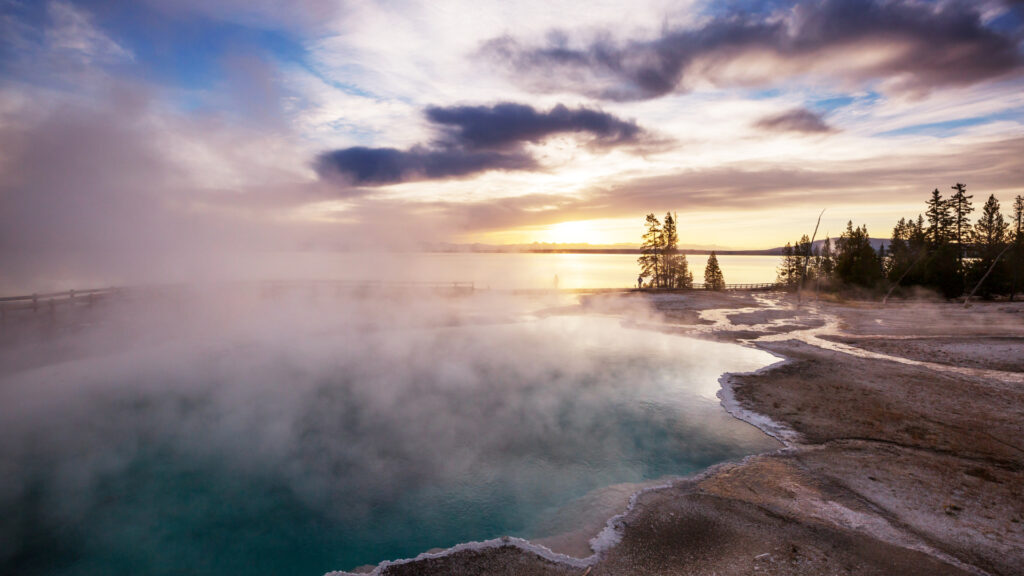
Woman Makes Debut on “Tourons of Yellowstone” Instagram Account
In June 2023, a woman ignored posted warnings, walked off the boardwalk and down to the edge of a hot spring, and stuck her hand in the boiling water. She had to reach back her hand to grab another family member to keep herself from falling in.
This incident was captured by another tourist (@caveman_mackenzie) and reposted on the “Tourons of Yellowstone” Instagram account. This Instagram account has been popular because of the ridiculous, unsafe, and stupid things tourists do at Yellowstone National Park. “Tourist” + “moron” = “touron.”
The visitor who took the video shared, “I told him that was a bad idea and they shouldn’t get off the boardwalk. His response was ‘Whatever man.’ So I hit record.”
Luckily, the woman and her companion survived. But the shouts of “It’s hot!” after she touched Silex Spring were expected. It has an average temperature of 174.7 degrees Fahrenheit. It was a miracle nothing more severe happened.
How Hot Are the Thermal Waters at Yellowstone National Park?
According to the USGS website, “The hottest springs in the deepest part of [Yellowstone Lake], at 125 m (410 ft) below the water, have a temperature of 174 °C (345 °F).”
The Daily Geyser in the Upper Geyser Basin erupts boiling water at about 200 °F. The website says, “The water at Terrace Springs, northeast of Madison Junction in Yellowstone National Park, is relatively cold (about 60 °C or 140 °F).”
Because geysers are hot springs that prevent water from circulating freely to the surface where heat can escape, they’re also extremely hot.
According to the National Park Service, “The deepest circulating water of the system can exceed the surface boiling point of water (199°F/93°C). The steam vents, or fumaroles, are often superheated, reaching temperatures as high as 280°F.”
Because of the differences in elevation and chemical compositions of Yellowstone’s thermal features, there’s a wide range of boiling temperatures. This also makes the geysers, hot springs, and other attractions diverse and beautiful with changing colors and features.
Have People Died as a Result of the Thermal Waters at Yellowstone?
As we mentioned earlier, the hot springs in Yellowstone National Park have injured or killed more people than any other natural feature. This is why park officials prohibit swimming and soaking. Posted signs explain the dangers of walking off the trails and boardwalks.
More than 20 people have died from burns suffered after entering or falling into Yellowstone’s hot springs. In recent years, a man from Oregon slipped into a hot spring and immediately died in 2016.
In 2021, a woman’s dog ran into a hot spring, and she suffered second-degree burns when she ran after her pet.
Additionally, making dumb and reckless decisions can land you with large fines and get you banned from the park for life.
Is It Dangerous to Visit Yellowstone National Park?
You shouldn’t feel afraid to visit America’s first national park. In fact, it’s a place everyone should try to see sometime in their lives. The landscape, wildlife, and unique features make this a one-of-a-kind park. It’s a bucket list item for many Americans and tourists from around the world.
But just like you shouldn’t walk out to the edge of the Grand Canyon, Yellowstone also has certain things you should avoid to keep yourself safe. First, the wildlife is everywhere. These animals can pose potential threats to humans when they get too close.
Second, the geothermal features are deadly. Boardwalks allow visitors to approach these steaming wonders safely. But when tourists ignore warnings and signs, their trips often end with hospitalizations or deaths.
Yellowstone National Park isn’t an open playground like Arches. It’s crucial for guests to enjoy this special place with respect, care, and caution.
How to Stay Safe at Yellowstone National Park
Since Yellowstone National Park has its hazards, there are a few things to remember when you visit.
The National Park Service suggests these safety tips. They aim to keep you safe while you enjoy the beauty and wonder here.
Never Approach Wildlife
As mentioned earlier, Yellowstone National Park is famous for its wildlife. It’s doubtful you’ll visit this park and not see at least one American bison, bear, bighorn sheep, or wolf.
But you want to see these impressive creatures from afar. Never approach wildlife with your car or on foot. These animals are dangerous because of their size. In a human encounter with a bison or bear, the animal usually wins.
Additionally, we don’t want wildlife to become accustomed to humans; that’s dangerous for them as they may venture closer into our spaces and cause problems.
You should always keep 100 yards away from bears, elk, and wolves and at least 25 yards from all other animals. Additionally, never feed the wildlife, including birds and squirrels.
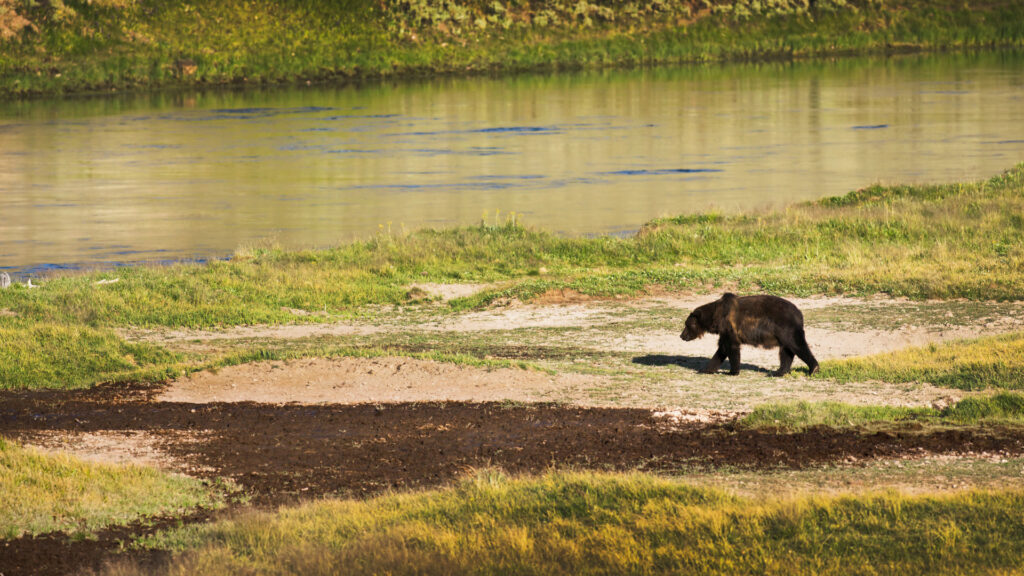
Stay in Your Car During a Wildlife Crossing
You’ll probably witness a wildlife crossing while visiting Yellowstone National Park. It’s truly a remarkable sight. But it’s imperative to stay in your car.
Don’t get out and try to get a selfie with a bison. And certainly don’t try to feed the wildlife. We don’t want to encourage these massive creatures to come near vehicles in search of food. Enjoy the scene from the safety of your car.
Keep in Mind: This isn’t the first time a tourist has made reckless choices in Yellowstone! This Tourist was Almost Gored Trying to Pet Bison in Yellowstone
Stay on the Trails and Boardwalks
It’s extremely important to stay on the trails and boardwalks at Yellowstone. This park is unlike any other in the country because of its vast acreage and dangerous geothermal features.
This isn’t a park where you want to find your own path. These trails and boardwalks allow visitors to get as close as safely possible to these geysers and hot springs. But venturing off of them could have deadly consequences.
The National Park Service explains, “Hot springs have injured or killed more people in Yellowstone than any other natural feature.” Don’t go touching the beautiful water to see how hot it is. Don’t dare a friend to do something stupid. It’s not worth it.
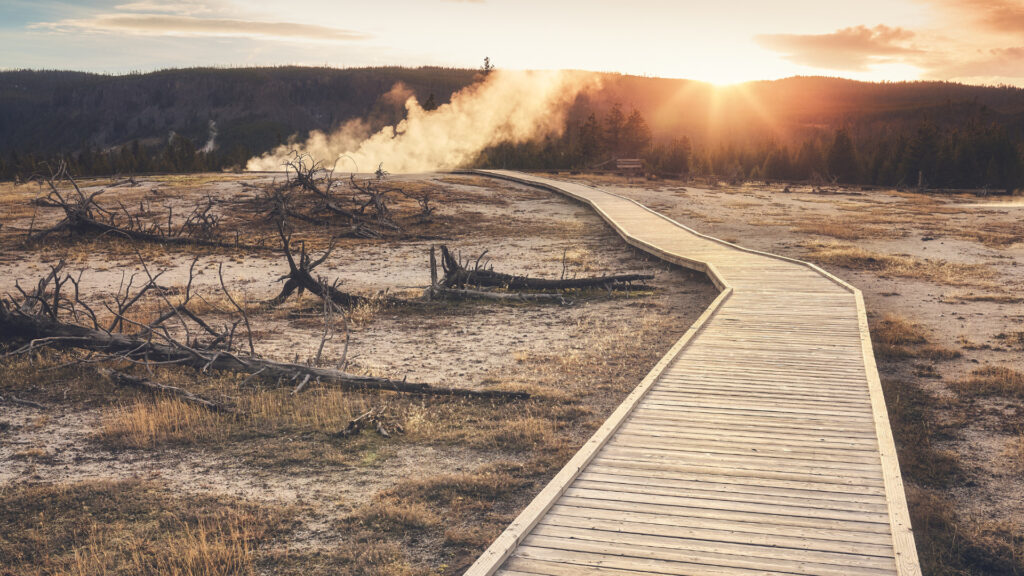
Keep Children Close
Yellowstone National Park is not a place where children should run free. If you want that experience for your kids, take them to Death Valley or the Badlands. It’s not safe for children to venture away from their parents at Yellowstone.
Keep them close so they don’t trip or fall off the boardwalks or quickly decide to touch something that appears magical. They’re naturally curious. So when a swirling blue watering hole with mist and steam appears, keep your hand in theirs to prevent them from running ahead.
Pro Tip: Looking to visit Yellowstone in your RV? Click to see how to plan an epic RV Trip to Yellowstone!
Obey Posted Warnings
Finally, if you want to soak in hot springs or go swimming on summer afternoons, Yellowstone National Park is not the place to do it. Swimming or soaking in hot springs is prohibited.
The high-elevation rivers and lakes also pose risks of hypothermia. You can get into the water in very few places, so obey the posted warnings to stay safe. Find other recreational swimming holes outside the park instead.
Finally, you won’t find many pet-friendly locations within Yellowstone National Park. It’s best to leave your pet at the hotel, campground, or Airbnb because they’re not allowed on boardwalks, hiking trails, in the backcountry, or in thermal areas.
This is for their protection and yours, should a pet get off-leash. Please obey the posted signs about where you can and can’t take your furry friends.

Don’t Be a “Touron” and Stay Safe at Yellowstone National Park
The “Tourons of Yellowstone” Instagram account is comical but sad. Why do visitors feel the need to tempt fate? Stay safe when you visit America’s first national park. Don’t get off the boardwalks. Don’t stick your hand in a hot spring. Don’t think “nothing is going to happen.” Because it can, and unfortunately, it has.
The shock this tourist had could have landed them face-first into an acidic and boiling pool of water. At that point, no one could intervene. They got lucky.
Yellowstone National Park is a wonder and right in our backyard. It’s a place of majesty and awe that most people respect when they visit.
So when you make your Yellowstone trip, join the millions of tourists who have safely basked in the breathtaking scenery and returned home to tell about it. Don’t allow the headlines to tell your story.
Do you think it’s dangerous to visit Yellowstone National Park?




